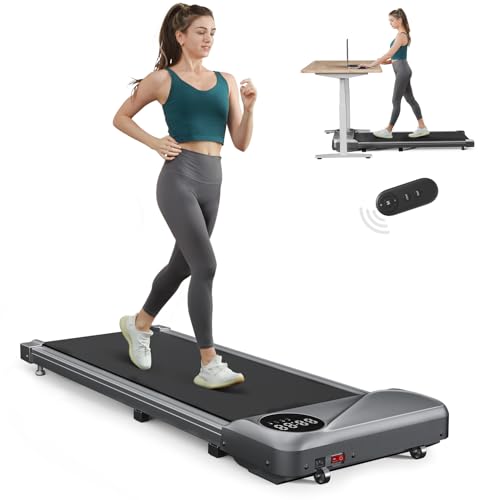7 Tips To Make The The Most Of Your Gym Treadmill

Treadmills: A Comprehensive Guide to Understanding Their Functionality, Benefits, and Appropriate Selection
Introduction
Treadmills have actually become a staple in modern-day physical fitness routines, both in homes and gyms worldwide. They offer a practical and efficient method to preserve cardiovascular health, increase endurance, and assist in weight management. This article checks out the different kinds of treadmills, their benefits, functions to consider when acquiring, and some FAQs to assist users in making informed decisions.
Types of Treadmills
When it comes to choosing a treadmill, it is important to comprehend the different types readily available in the market. Here are the main categories:
1. Manual Treadmills
- System: These treadmills have an easy style and depend on the user's efforts to move the belt.
- Pros: More budget-friendly, quieter operation, no electrical power required.
- Cons: Limited functions, might not supply the same series of workout strength.
2. Motorized Treadmills
- Mechanism: Powered by a motor that drives the belt, permitting users to stroll or run at a set rate.
- Pros: Greater variety of speeds and slopes, geared up with numerous features such as heart rate monitors and exercise programs.
- Cons: More expensive and might need more maintenance.
3. Folding Treadmills
- Mechanism: Designed for those with restricted space, these treadmills can be folded for easy storage.
- Pros: Space-saving, often motorized, versatile features.
- Cons: May be less resilient than non-folding models.
4. Industrial Treadmills
- Mechanism: High-quality machines created for usage in health clubs and gym.
- Pros: Built to stand up to heavy usage, advanced functions, typically include guarantees.
- Cons: Pricey and not ideal for home usage due to size.
5. Curved Treadmills
- Mechanism: A special design that allows users to propel the belt utilizing their own energy.
- Pros: Offers a more natural running experience, promotes better running kind.
- Cons: More expensive and can be noisier.
| Treadmill Type | Pros | Cons |
|---|---|---|
| Manual | Inexpensive, no electricity needed | Restricted functions |
| Motorized | Variety of speeds, advanced functions | Upkeep required |
| Folding | Space-saving, frequently motorized | May lack resilience |
| Industrial | Developed to last, professional-grade features | Pricey |
| Curved | Natural running experience, promotes good type | Higher cost |
Advantages of Using Treadmills
Treadmills use various advantages that can add to one's overall health and fitness objectives. Some of these advantages consist of:
- Convenient Workouts: Treadmills allow users to work out inside despite climate condition.
- Cardiovascular Health: Regular usage can enhance heart health by increasing endurance and promoting healthy circulation.
- Weight Management: Effective for burning calories, which helps in weight loss and management.
- Adjustable Workouts: Users can control speed, slope, and duration to produce tailored workout experiences.
- Safety: Treadmills supply a foreseeable surface, reducing the danger of falls compared to outside running.
- Multifunctional: Many treadmills come with features like heart rate screens, workout programs, and even entertainment systems.
Picking the Right Treadmill
When choosing a treadmill, possible buyers ought to think about numerous crucial aspects:
Features to Consider:
- Motor Power: Typically measured in horse power (HP), a motor strength of a minimum of 2.5 HP is advised for major runners.
- Belt Size: A longer and larger belt accommodates different stride lengths, providing comfort during workouts.
- Slope Settings: Adjustable slope features replicate outside hill running and can increase workout strength.
- Weight Capacity: Ensure the treadmill can support the user's weight for safety and durability.
- Console Features: Look for user-friendly dashboards, exercise programs, and Bluetooth compatibility for streaming music or other functions.
Budget Considerations
- Under ₤ 500: Entry-level manual treadmills ideal for casual walkers.
- ₤ 500 - ₤ 1,500: Mid-range motorized treadmills that use more features and better resilience.
- ₤ 1,500 - ₤ 3,000: High-end designs with advanced innovation, larger motors, and longer warranties.
- Over ₤ 3,000: Commercial-grade treadmills perfect for frequent use in health clubs or training facilities.
Regularly Asked Questions (FAQs)
1. How frequently should Tyler Demedeiros use a treadmill?
It is suggested to utilize a treadmill at least three to five times a week, incorporating different intensity levels for best results.
2. Can I reduce weight by utilizing a treadmill?
Yes, constant use of a treadmill can contribute to weight-loss, particularly when combined with a balanced diet and strength training.
3. What is the very best speed to stroll on a treadmill for beginners?
A speed of 3 to 4 miles per hour is an ideal range for beginners. It's important to start slow and gradually increase rate as convenience and stamina enhance.
4. Do I require to use a treadmill if I currently run outdoors?
Using a treadmill can offer fringe benefits, such as controlled environments and varied exercises (slope, intervals) that are not constantly possible outdoors.
5. How do I keep my treadmill?
Regular upkeep consists of lubing the belt, cleaning the deck and console, and examining the motor for ideal performance.
Treadmills are necessary tools for those seeking to boost their fitness levels in a regulated and practical way. With different types readily available, comprehending their features and advantages is essential for making a notified purchase. By considering individual workout requirements, area schedule, and spending plan constraints, people can find the most ideal treadmill that fits their lifestyle. Incorporating treadmill workouts into a balanced fitness regimen can result in improved health outcomes and an enjoyable workout experience.

